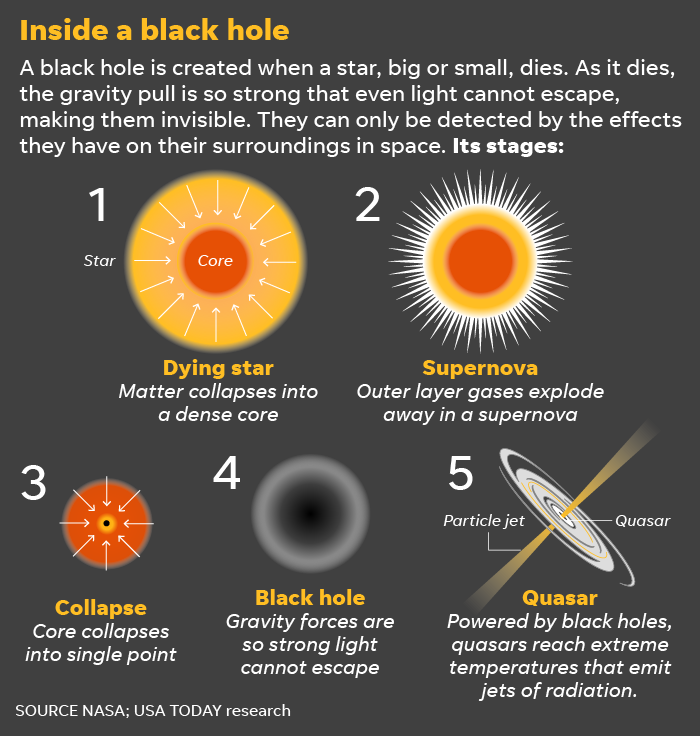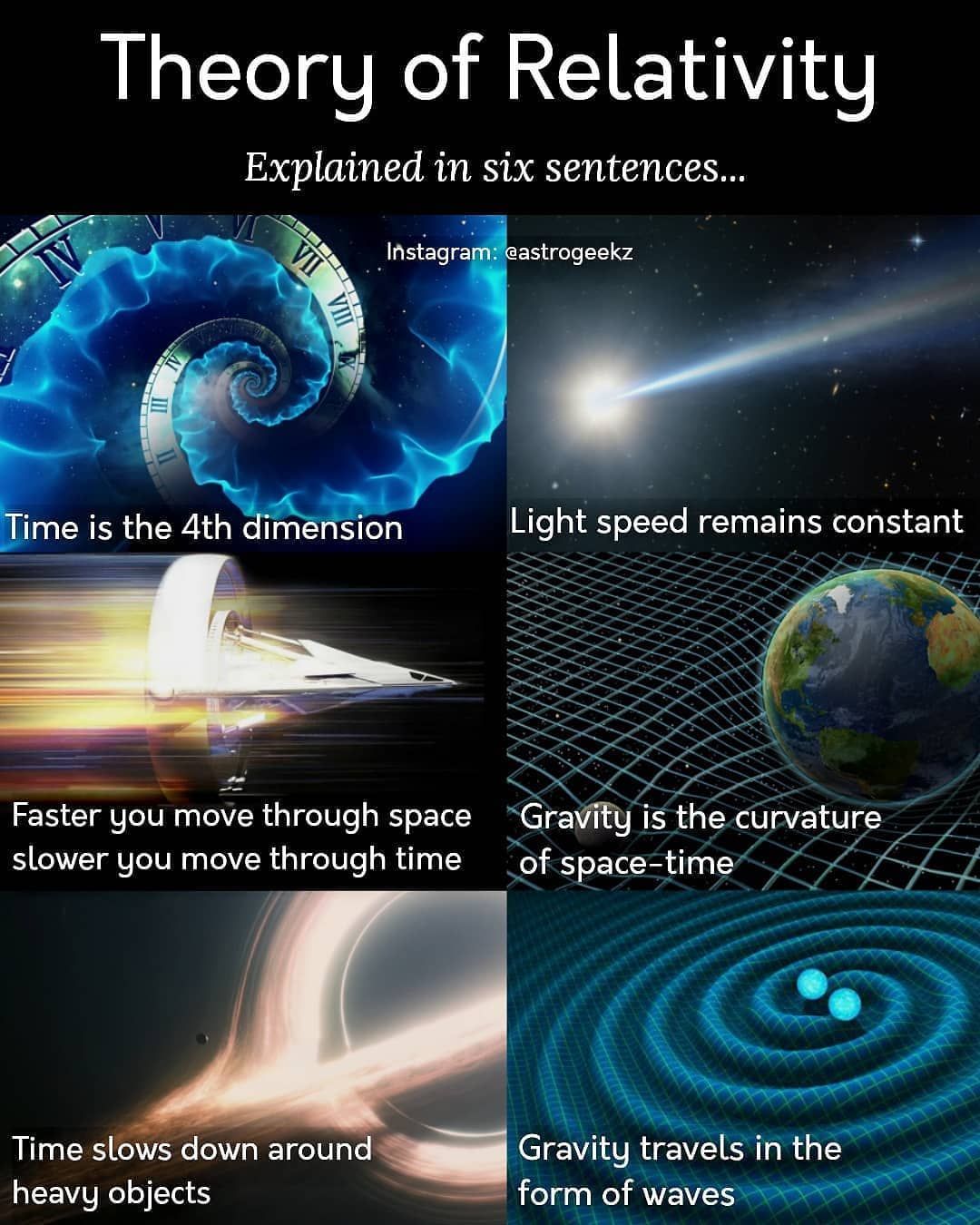Mankind’s imagination always works for the things he cannot clearly understand or touch. This specie always seems to be looking for something on the other side.
And therefore, black hole is not called black because of its blackness or opacity but rather because they rudely steal everything in plain sight, according to Stephen Hawking.
Although a black hole emerges from death of a star. And since our planet sustains on the energy of a star, we would barely want a star to die anywhere. But a black hole is always very instigating to look at.
What are black holes?
They are points in the Universe which are so dense that they create deep gravity sinks, anything that passes across them will be sure to sink in.
Beyond an event horizon along its periphery, not even the light can escape its clutching gravity. Any black hole’s surface area is limited by a spherical boundary known as the event horizon i.e., beyond this point nothing, not even light, can escape its invincible gravitational pull.

They are broadly categorized into 4 types: stellar, intermediate, supermassive, and miniature.
When the stars begin to age, most will inflate, lose mass, and with processes extinguishing within, it cools eventually to form white dwarfs.
But the largest ones of these fire-grilled bodies, possessing mass at least 10 to 20 times that of Sun, evolve to become either super-dense neutron stars or the stellar-mass containing black holes.
In the moments of final annihilation, a star fades off in a blast called Supernovae. All the contained mass is then scattered in all direction and the star begins to collapse as no nuclear fission is available to keep a star alive.
Black holes, irrespective of their initial sizes, can grow throughout their lives, consuming gas and dust from any object that creeps too close, known as cosmic vacuum cleaners.
Stephen Hawking devised one of the most famous theorems for black holes, which has now been verified.
Proposed in 1971, the theorem was derived from the Einstein’s theory of general relativity and it claimed that it is impossible for the surface area of a black hole to decrease over time.
According to the new study, the researchers confirming the Hawking’s black hole area law can imply that the properties of black holes can offer important and revealing clues to the hidden laws ruling the Universe.
The lead author of the study says: “A black hole’s surface area can’t be decreased, which is like the second law of thermodynamics. It also has a conservation of mass, as you can’t reduce its mass, so that’s analogous to the conservation of energy.”
“Black holes have an entropy, and it’s proportional to their area. It’s not just a funny coincidence, it’s a deep fact about the world that they reveal. It was realized that this is fundamental.”

Favorable and contradictory laws:
Though the theory of relativity rules all in matters of Black holes. Oddly enough, the Hawking’s area law (in line) seems to contradict another proven theorem: that black holes should evaporate over extremely long-time scale.
Assessing this, will require another approach and effort and can develop new physics.
However, it is closely related to the second law of thermodynamics, which states that the entropy, or disorder, of a closed system must always increase.
What was Hawking’s interpretation for the area law?
We can understand that a black hole’s surface area increases with its mass. He explains that since no object thrown inside can anyhow escape or leave the black hole, its surface area cannot decrease.
However, there is an exception. The more a black hole spins, its surface area shrinks. This made researchers wonder if an object can be thrown inside it so hard to make the black hole spin enough to decrease its area?
“You will make it spin more, but not enough to counterbalance the mass you’ve just added. Whatever you do, the mass and the spin will make it so that you end up with a bigger area”, author explains.
For establishing the relation between disorder or entropy around and the area of black hole, gravitational waves or ripples were created in space-time. These ripples were created 1.3 billion years ago by the two massive black holes as they spiraled toward each other at high speed.
It is interesting to note that these were the first waves to be detected in 2015 by the Advanced Laser Interferometer Gravitational-Wave Observatory (LIGO) that senses and measures even the slightest distortions in space-time.
The analysis was split into two phases and the signal was studied in two halves — before and after the black holes merged.
Therefore, the researchers calculated mass and the spin of both the original two merging black holes and the new combined one, and consequently the surface area can be measured of each of these entities.
“As they spin around each other faster and faster, the gravitational waves increase in amplitude more and more until they eventually plunge into each other — making this big burst of waves”.
“What you’re left with is a new black hole that’s in this excited state, which you can then study by analyzing how it’s vibrating. It’s like if you ping a bell, the specific pitches and durations it rings with will tell you the structure of that bell, and also what it’s made out of.”
Cumulative findings of the Experiment:
The newly formed black hole out of the two after significant entropy, was found to have greater surface area than that of the initial two combined, thereby confirming Hawking’s area law with a more than 95% level of confidence.
“It’s like boiling water, you’re getting steam evaporating from your pan, but if you only limit yourself to looking at the disappearing water inside of it, you might be tempted to say the entropy of the pan is decreasing. But if you take the steam into account too, your overall entropy has increased. It’s the same with black holes and Hawking radiation.”
The author exclaims for black holes after the experiment in awe: “I’m obsessed with these objects because of how paradoxical they are. They’re extremely mysterious and confounding, yet at the same time we know them to be the simplest objects that exist.”
“This, as well as the fact that they’re where gravity meets quantum mechanics, makes them the perfect playgrounds for our understanding of what reality is.”
According to the researchers, the results fell completely in line with Einstein’s relativity and hawking’s concept without much dissent.
The black holes’ shrinking act cannot be explained according to general relativity theory (rules for big objects), but they can according to quantum mechanics (physics of very small objects).


